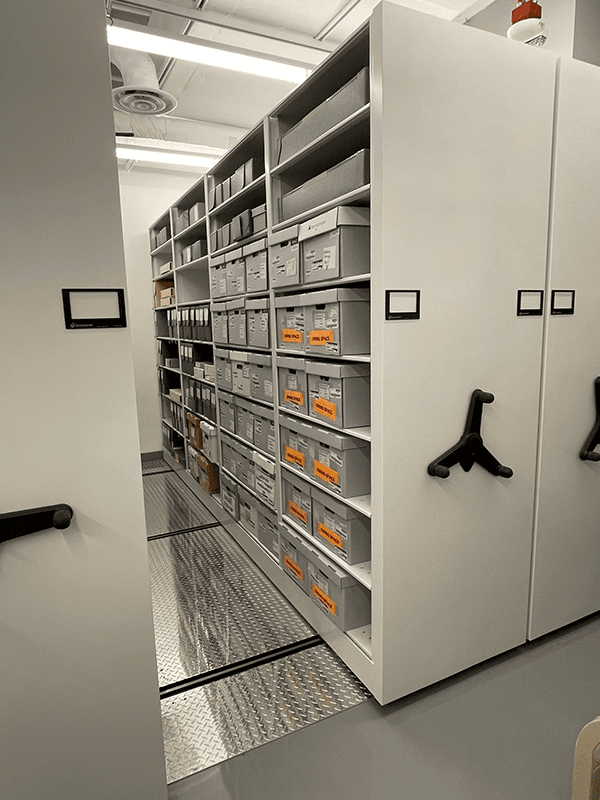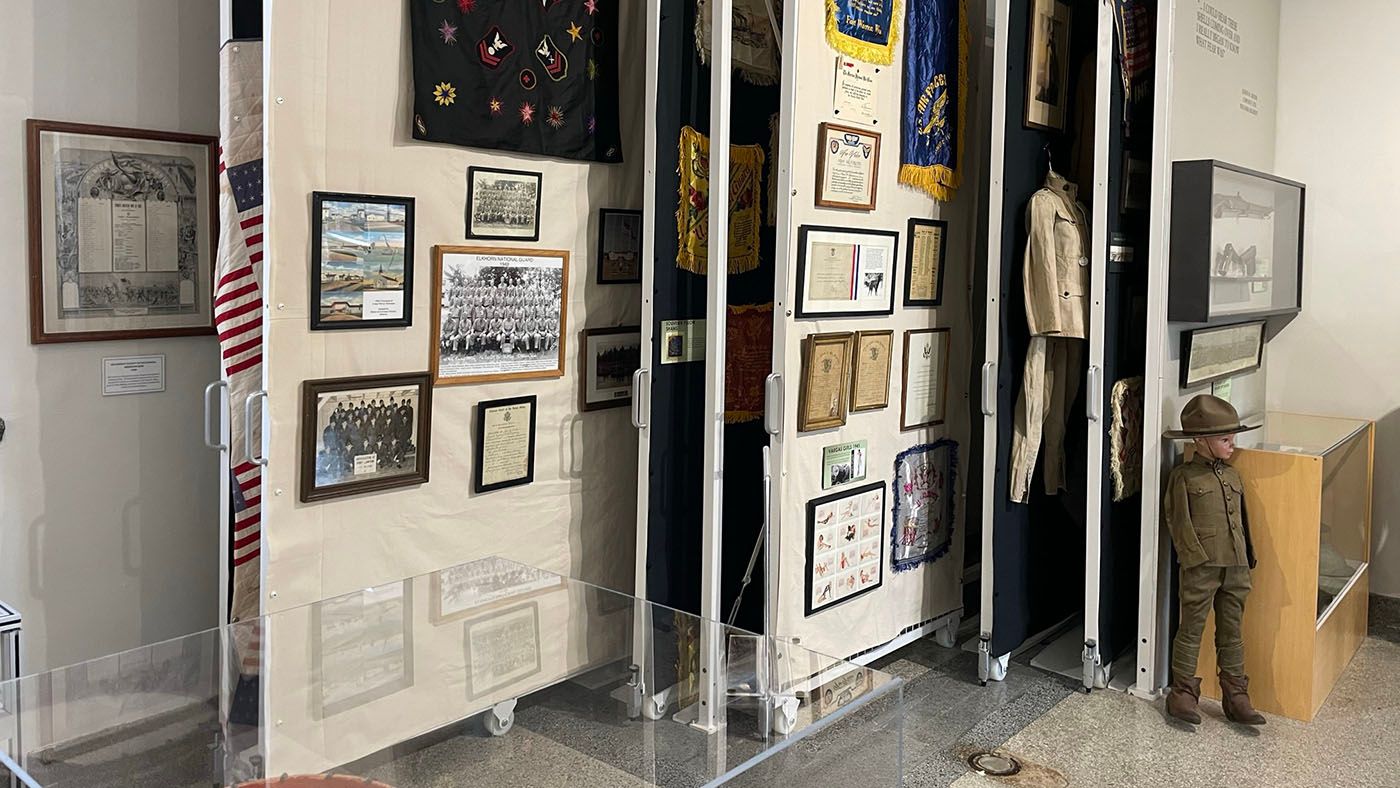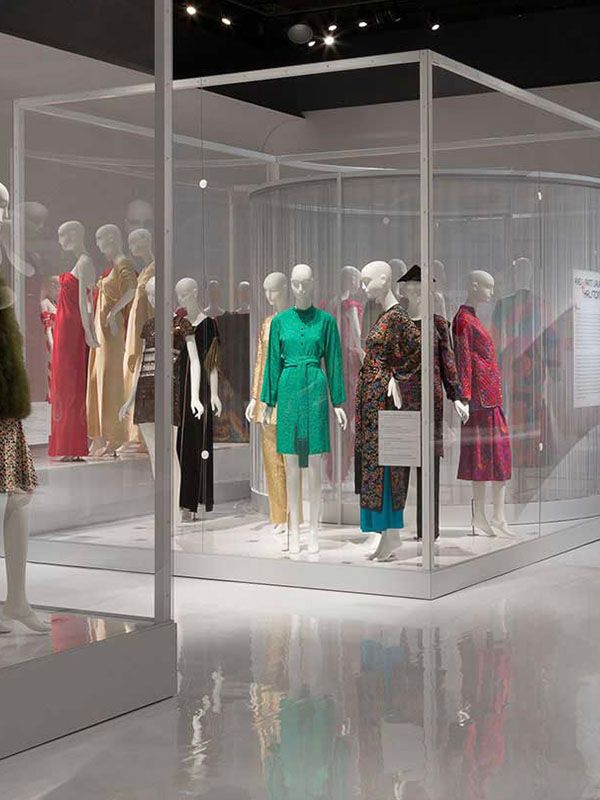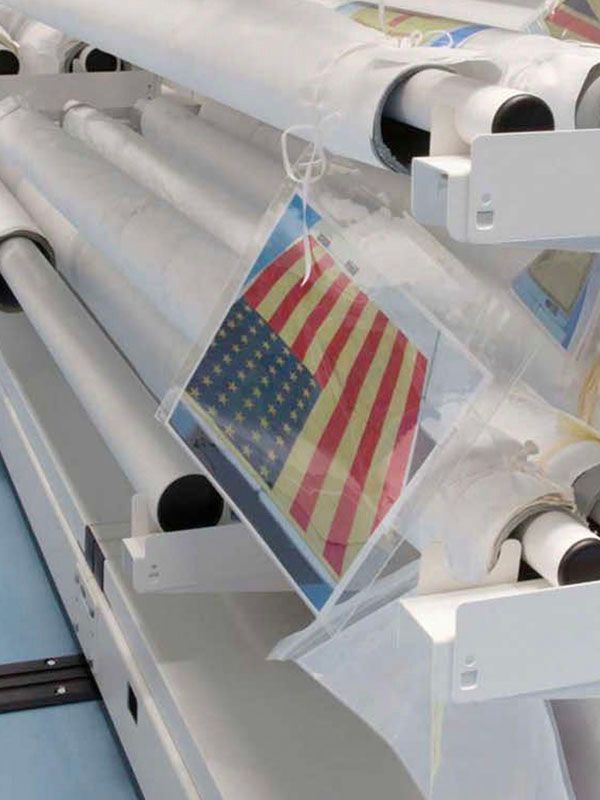Ottawa, Ontario
The Ingenium Centre
Drawers and trays on shelving provide a space-saving and budget-friendly alternative to museum cabinets.
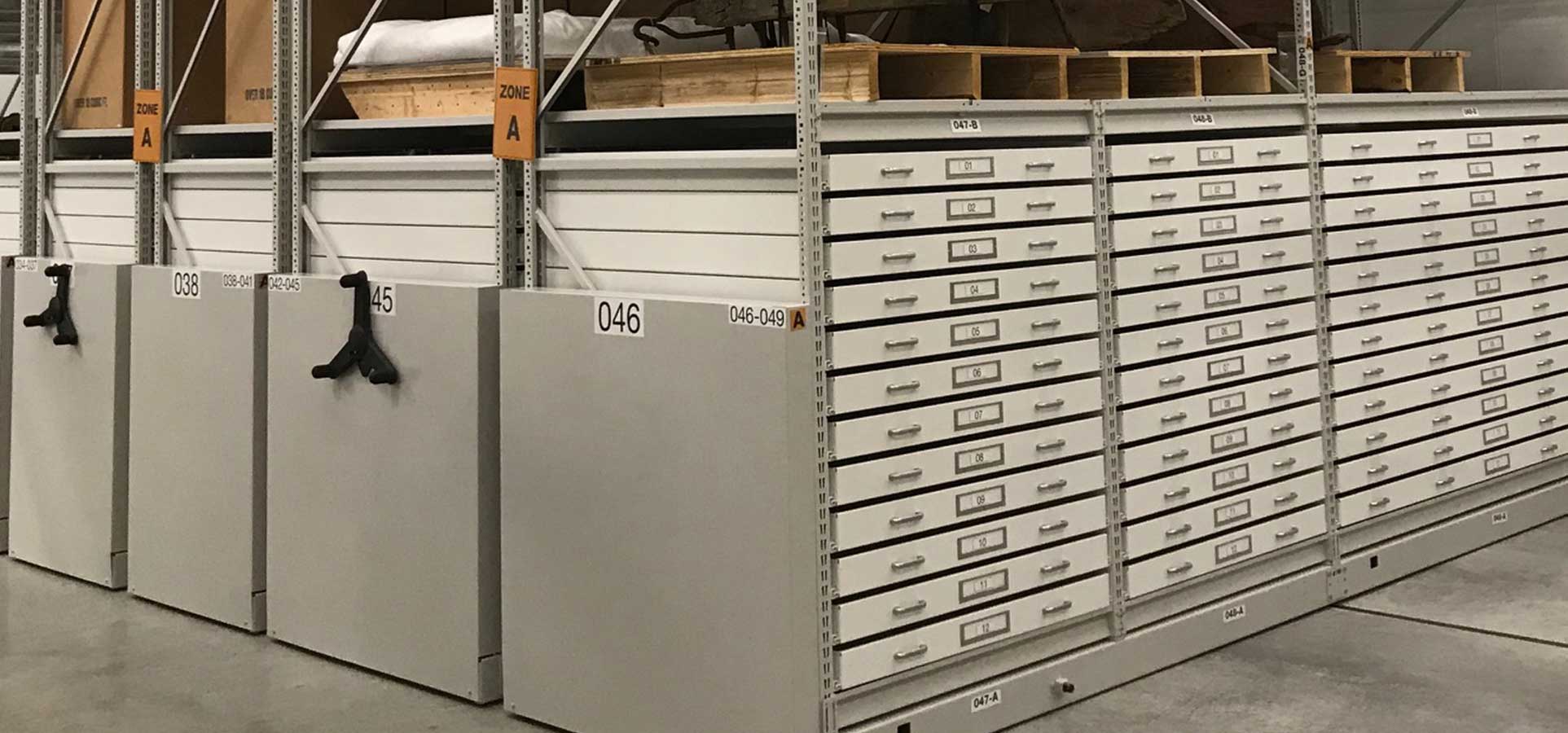
A Diverse Collection
Canada has a long history of scientific advancement, and the new Ingenium Centre in Ottawa was designed to protect and showcase artifacts that comprise the nation’s science and technology collection. The collection ranges in size from a train locomotive and other large vehicles to tiny electronic components.
“The wide range of scales was challenging,” said Helmut Klassen, an architect who worked on the project for the firm Diamond Schmitt. “We were working with things that were small enough to fit in my hand, up to tractors and boats. It’s the first time I’ve had to think about how to stack automobiles on shelves.”
Promoting Accessibility
Accessibility was the driving force behind the project. “As part of the funding process, we had to prove that our storage solutions would make objects in the collections more accessible to Canadians and anyone else around the world,” said Gordon Perrault, director of conservation and collection services.
The commitment to accessibility arose in part from the need to overcome inefficient storage in the previous system. “You often had to move several objects to get to the piece you needed,” Perrault said. “That wasted our time, and the unnecessary handling wasn’t good for the objects, either.”
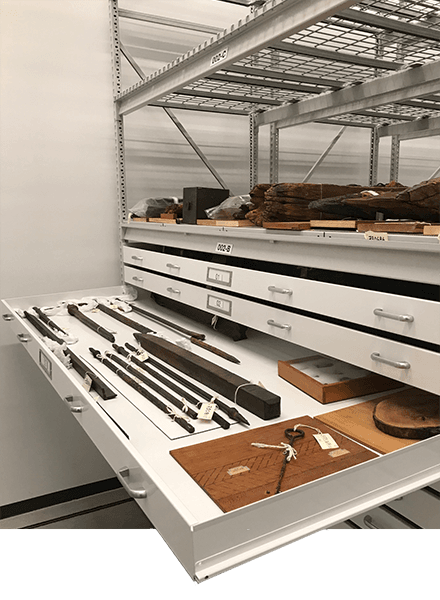
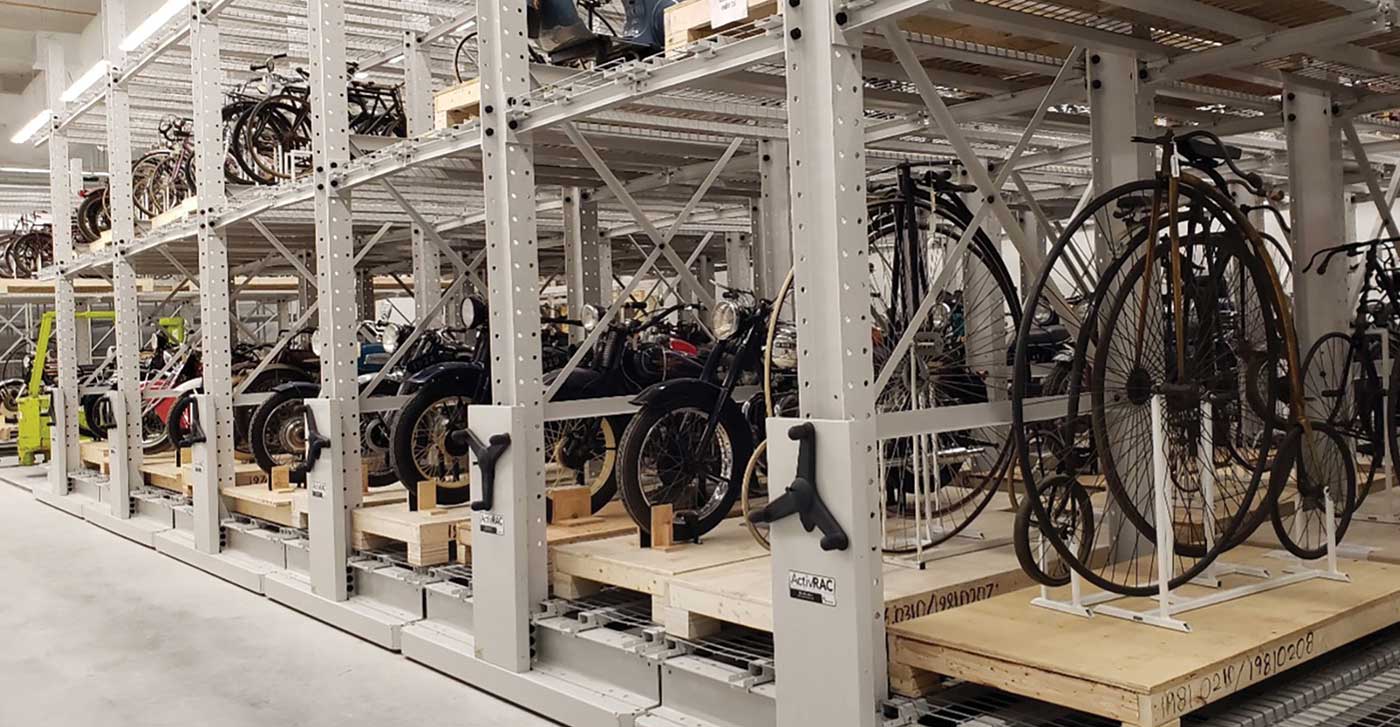
"It’s the first time I’ve had to think about how to stack automobiles on shelves."
- Helmut Klassen, Architect
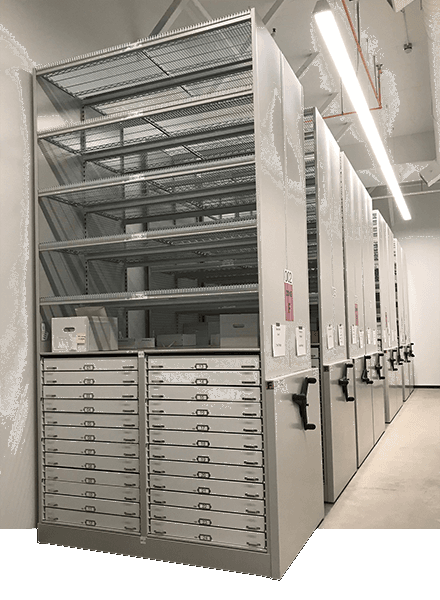
Space Optimization
The 36,000-square-meter (nearly 390,000 square-foot) facility looks like it’s around ten stories tall from the outside, but the ceilings are so high that there are actually only four floors in the building.
Although the facility is large, the planning team still needed to optimize space. “We were aiming for as compact a volume as possible because of economic demands,” Klassen said. “We needed to maintain a reasonable size for the building.”
The need to optimize space had to be balanced with the essential requirement to protect and provide access to the collections objects stored in the facility. “It’s a number of layers of consideration, but it all starts with the collections themselves,” Klassen said. “They’re meant to be cared for over a long period of time. And the handling and storage aspect of it is very important, particularly over the long term.”
Adding Capacity, Improving Accessibility
To simplify an already complex design and construction process, the planning and design team wanted to work with a single storage provider. They chose Spacesaver, and they worked with Spacesaver’s engineers to create storage solutions throughout the facility.
They found that one of the most efficient solutions was using Spacesaver’s Nantucket Trays and Drawers on 4-Post shelving and extra-wide trays on RaptorRAC® Widespan Shelving. The units were mounted on high-density mobile systems to save even more space.
"We needed to make sure that we used the space above."
- Helmut Klassen
Trays & Drawers on Shelving
A Place for Everything
When you need convenient and compact storage but don’t need the welded frame and sealed interior environment that cabinets provide, explore your options for using trays and drawers on shelving.
The Nantucket system is a value-engineered alternative to Spacesaver’s museum cabinets, providing museum-quality drawers and trays inside a 4-Post Shelving shell.
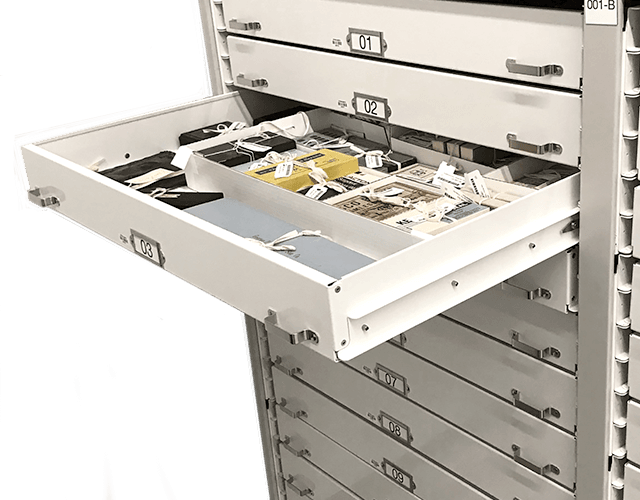
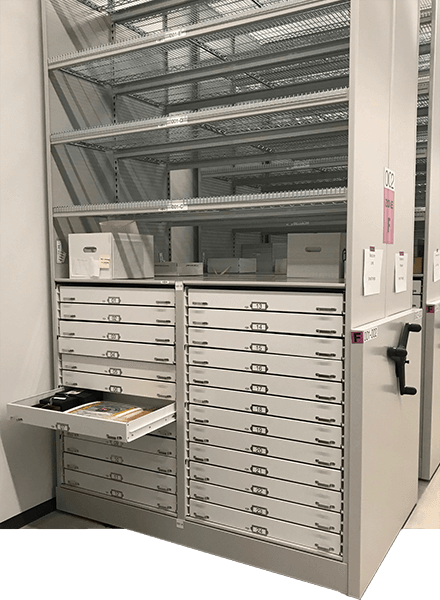
Maximized Capacity
Traditional cabinets often come in standard heights, with empty space above them in tall-ceilinged rooms. With so many objects to store, wasting space wasn’t an option in this facility.
“We installed trays and then had shelves above so we could maximize the capacity,” Klassen said. “The idea was that throughout the entire space, we needed to make sure that we used the space above. If we had chosen map cabinets or any other type of cabinets, we wouldn’t have been able to use the full height.”
Improved Accessibility & Organization
Staff were relieved to find that the space-saving solution also improved their ability to find, retrieve, and study stored objects. “We can’t believe how easy it is to find pieces now,” Perrault said. “And the drawer units are so accessible: you can pull them out and the piece is right in front of you. The trays are huge, they slide well, and they’re lightweight, given their size.”
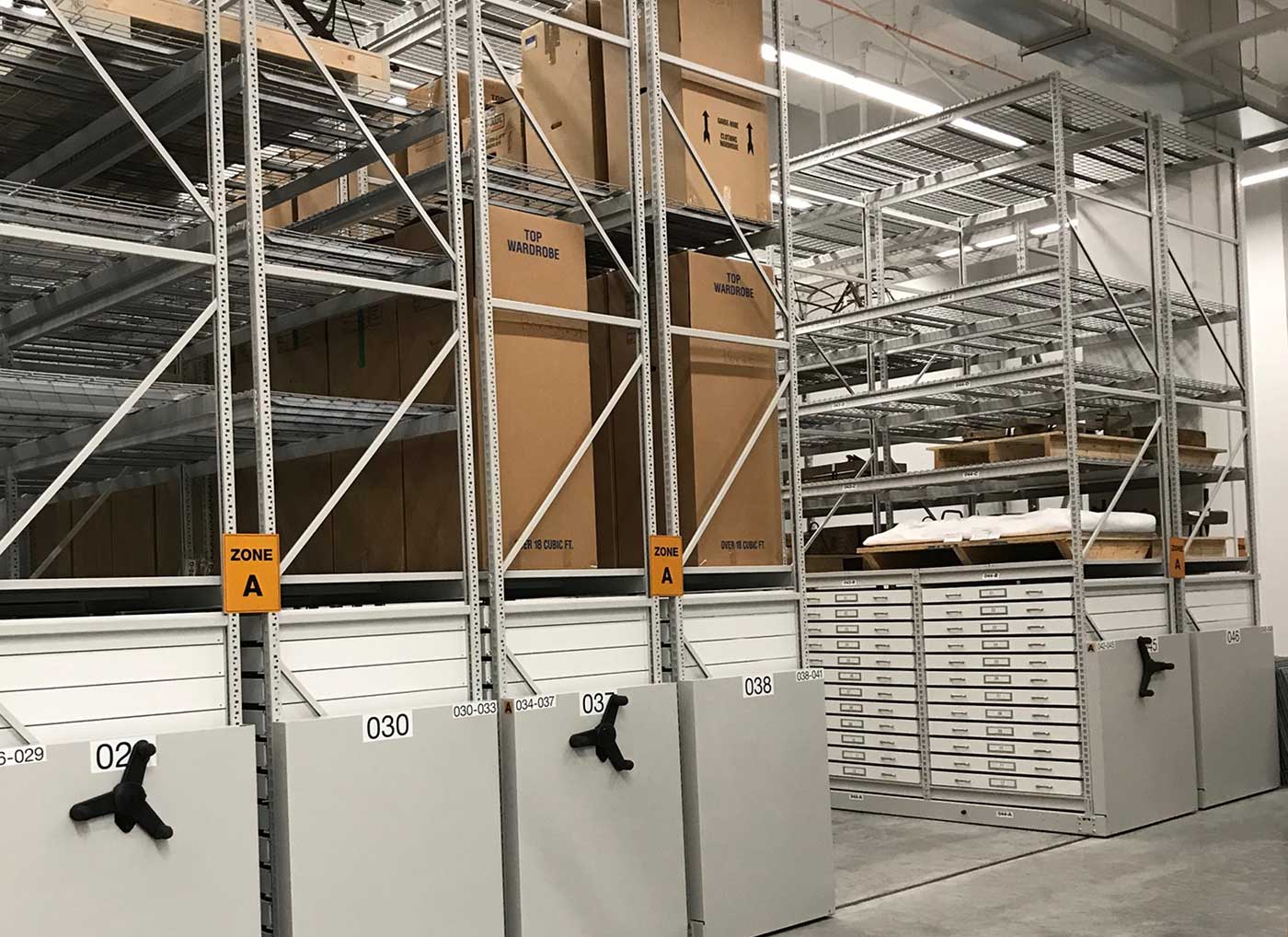
"We can’t believe how easy it is to find pieces now."
- Gordon Perrault
Accessible Collections in Inspiring Spaces
The new collections storage spaces have an expansive, open feel, with plenty of room to study objects right where they’re stored. “The sheer amount of space in the drawer-and-shelving units is truly impressive,” Perrault said. “I can’t even tell you how much space we’ve saved.”
On top of all the other benefits, the trays and drawers saved money, too. “Converting from our old map cabinets to the drawer units was both a space savings and a major cost savings,” Perault added.
